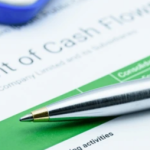The Why and How of Reconciling Bank and Credit Card Statements
A staple of monthly accounting activities for most companies (and many home money managers) are bank and credit card reconciliations. It is not uncommon, however, to hear “why bother?” Well, the truth is that “what you don’t know CAN hurt you” and, all too often, it does. But, reconciliation is such a simple way to safeguard your money and your financial reputation, why not do it regularly?
What’s that you say? That sounds like an accounting exercise. Au contraire! All it actually means is matching what you think your balance is with what the bank shows on the monthly statement. And it’s important to do for 3 reasons:
- To know your actual balance
- To discover entries that need to be explored and corrected … like bank errors, transactions you may have overlooked, or even fraud
- And, finally, to see exactly where your money is coming from and going to. It’s important to step back and see your cash flow for each month to confirm it is in line with your expectations.
The process is relatively easy whether you use a checkbook register, Excel worksheet, or personal banking software. Begin with the bank statement and your register side by side. Check off each bank statement item that is also on your records. When you find items that are not on your transaction list, you must determine what needs to be corrected. Sometimes you may need to contact the bank for an explanation or correction but, more often, it is something you have overlooked in posting activity. Frequent entries you may not see until your statement arrives include monthly service fees, interest earned, ATM transactions, and any automatic payments.
When all of the items on the bank statement have been checked off, look at your register for items not yet marked as matched. These would include recent deposits or checks you issued that have not yet been posted by the bank. Add these unposted deposits and subtract outstanding checks from the bank balance and it should equal your own balance. When it does, you’re done; you have reconciled the account. If not, keep looking for differences until it does.
If outstanding checks have not cleared the bank within a reasonable amount of time, contact the payee to see if they received it. If not, it may have been lost in transit in which case you should put a “stop payment” on it and reissue the payment so your account with them doesn’t become past due.
A tip for finding differences: If the difference is evenly divisible by 9, then there is a transposed number somewhere. For example, if you wrote a check for $360 but entered it as $306, the difference is $54 which is evenly divisible by 9. This same process should be applied to each credit card, investment, health savings, and any other financial account that has a balance.
It’s your money; take a few minutes each month to keep an eye on it.
Learn how this information can make your business more efficient – Call (408) 260-5250







